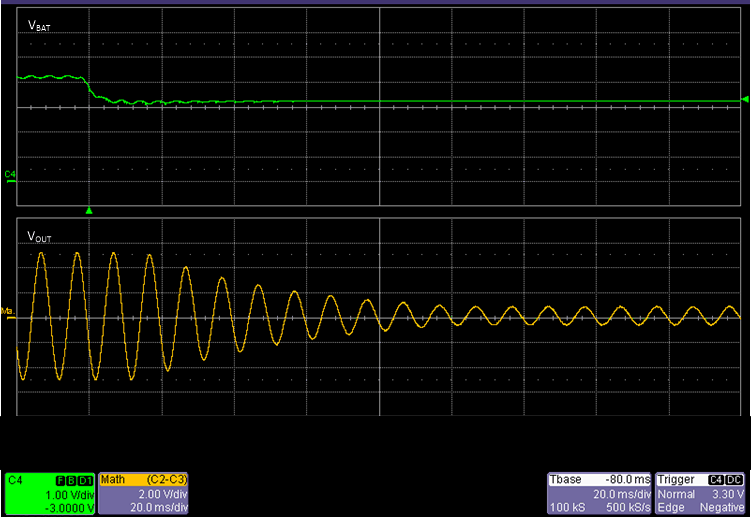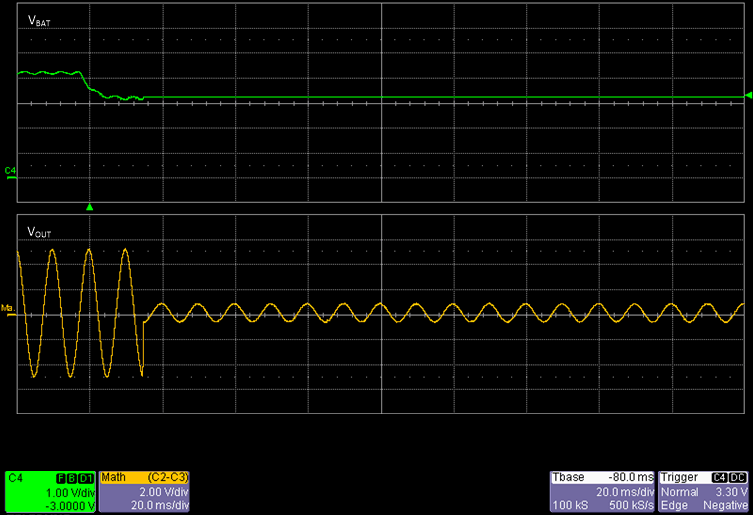SLAA899 December 2019 TAS2110 , TAS2555 , TAS2557 , TAS2559 , TAS2560 , TAS2562 , TAS2563 , TAS2564 , TAS2770
4.3 Attack
The AGC will adjust the gain gradually based on user settings when it is necessary to limit the maximum output voltage. The speed of this attack can be set through the step size and attack rate. The step size may vary from a minimum step of 0.25 dB to a maximum step of 2.5 dB.
The attack rate determines how quickly these steps occur. Attack rate ranges 1 sample per step all the way to 128 samples per step. The samples are a function of the frame clock frequency. Fewer samples per step will result in a faster overall attack.
 Figure 4. Minimum Attack Rate
Figure 4. Minimum Attack Rate The attack example in Figure 4 is set to 128 samples per step, 0.5 dB per step, and 16.5 dB maximum attenuation. However, the signal is already somewhat attenuated by the limiter. In effect the amplifier only needs to attenuate an additional 13.5 dB. With a sample rate of 48 kHz the attack lasts over a total of 72 ms.
 Figure 5. Maximum Attack Rate
Figure 5. Maximum Attack Rate The Figure 5 uses 1 sample per step, 2 dB per step, and a total of 13.5 dB maximum attenuation. With a sample rate of 48 kHz the attack takes only 140 us.